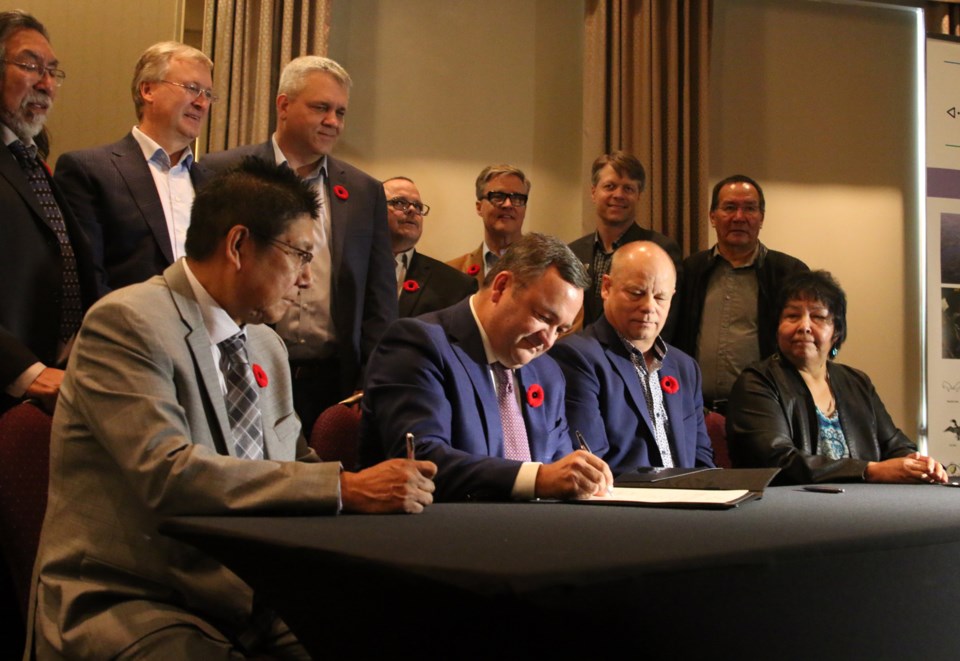THUNDER BAY — Wataynikaneyap Power, which translates to "line that brings light," is a $1.9-billion transmission project that began in 2007. It is mandated by 24 First Nations to connect 17 northern communities to the provincial power grid.
The licensed transmission company is equally owned by the 24 First Nations communities (51 per cent), in partnership with Fortis Inc. (49 per cent) and other private investors.
Margaret Kenequanash, chief executive officer of Wataynikaneyap Power, spoke to the Thunder Bay Chamber of Commerce members at the Prince Arthur Hotel last week and described the journey, challenges and accomplishments in bringing power to these communities.
Kenequanash explained it began with principles established by their leaders that set out expectations of how Wataynikaneyap Power, the contractor and the subcontractors conduct themselves in the homeland of their people.
"It asked us to respect and to recognize our rights, our land, our principles, our way of life, and that we have land-sharing protocols," Kenequanash said. "We have sacred responsibilities. We must respect our confidentiality because we have information that is sensitive in terms of our connection to the land, which is a spiritual gift by our Creator."
Kenequanash said there was much work to engage their people in this project, taking a long time to build trust with them.
"We've been instructed and given the responsibility to construct, build maintain and operate and don't poison the land," she said, adding if there's a gas can that's left on the ground, "I guarantee that I'm going to get the call the next day."
Kenequanash said they were told not to use herbicides to protect land, water, and animals and worked through vegetation management planning.
She said they were also instructed not to interfere with hunting, fishing and trapping.
"Our people do spring hunting, summer activities, winter activities — when the heck we're going build this project?" she asked.
"On top of that, we have what they call Endangered Species Act, an Environmental Assessment Act that has timing and limitations."
Kenequanash said they took a different approach, which was to communicate and engage with the communities, inform them of the activities that are planned in the area and work with them.
"Did it work 100 per cent? No," she said.
"But in the end, it took communication engagement, planning, and discussion with First Nations."
She added that there was archeological work done, and any artifacts found were returned to the First Nations.
The 1,800-kilometre power line stretches along an 800-km arc to communities 90 km north of Red Lake to 160 km east of Pickle Lake. None of the communities north of Red Lake and Pickle Lake have access to all-season transportation or utility corridors.
The goal of the power line installation is to improve living conditions, community infrastructure, water, housing, and health outcomes while eliminating aging and diesel power generators.
"The vision is that we start to look at building our own equity within our homeland, Kenequanash said. "The long-term goal is ownership of this project."
She noted the frequent disruption to local services caused by the number of outages caused by diesel generators. The fuel is mostly transported by winter roads, and climate change is posing more challenges.
Kenequanash explained that the federal government currently puts out about $98 million annually to maintain diesel generators while the Ontario government also subsidizes the Hydro One remotes at a significant amount annually.
"All we're doing is reprofiling that money that's being dumped into dirty energy into clean energy that's hopefully going to become more sustainable with opportunities for our First Nations," she said.
". . . We looked at the savings and what we're trying to do in terms of avoiding greenhouse gas emissions. It's like we took 35,000 cars off the road," she said.
Since 2012, there have been more than 2,900 engagement activities, more than 630 trainees, and 53 training programs. The project contractors employ 954 First Nation members.
The project is now 99 per cent complete, with 16 communities hooked up to the power line. One remaining community is still under community development. The completion date is June 17, 2024, with continued work on the demobilization of heavy equipment and camps and land restoration continuing through the summer and fall.
The Chronicle Journal / Local Journalism Initiative
